If you’re interested in sustainable and efficient farming, look for vertical hydroponic farming. This farming uses less water and land than traditional methods and can even be done indoors. This content will explore the benefits of vertical hydroponic farming and some of its challenges. We’ll also give you some tips, techniques, and ideas on how to get started with vertical hydroponic farming.
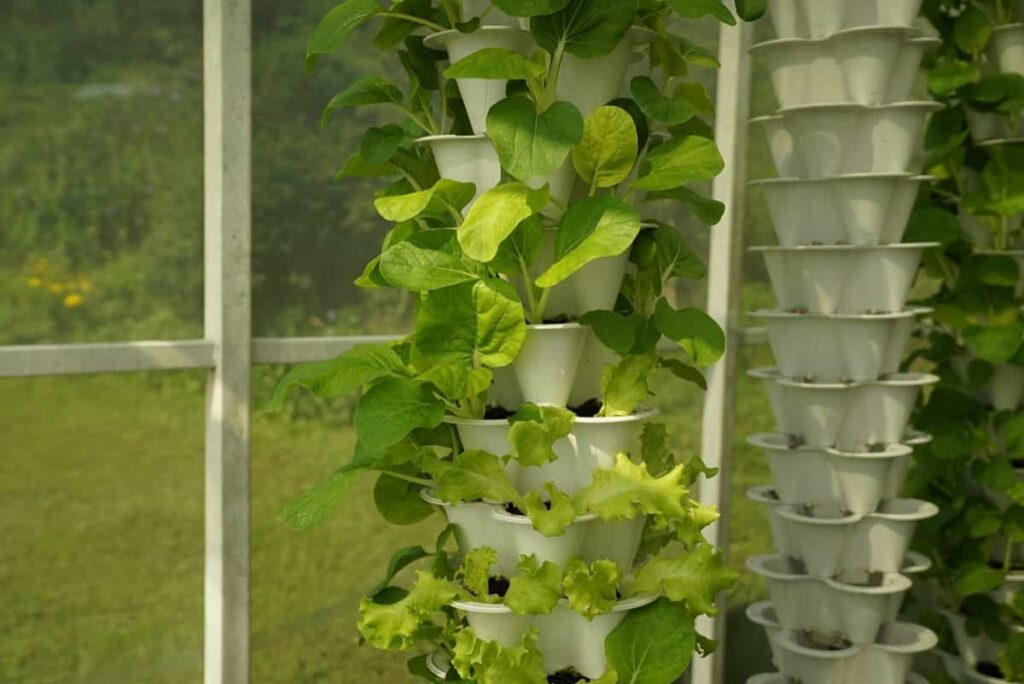
What is vertical hydroponic farming?
Vertical hydroponic farming is where plants usually grow in vertically stacked layers in a controlled environment. The benefits of vertical hydroponics are that it allows for a higher density of plants, which can lead to higher yields, and it also reduces the amount of space needed to grow crops.
Benefits of vertical hydroponic farming
Vertical hydroponic farming has many benefits over traditional horizontal farming. The most significant benefit is the increased yield achieved with vertical hydroponics. With vertical hydroponics, plants can be grown closer together, allowing more plants to be grown in a smaller space. This can result in a significantly higher yield per square foot than horizontal farming.
In addition, vertical hydroponic farming can reduce water usage by up to 98% when compared to traditional horizontal farming. This is because water is recycled and reused in a closed-loop system rather than lost to evaporation. Additionally, because there is no need for soil, there is also no need for tilling or other soil preparation methods, which further reduces water usage.
In case you missed it: Vertical Strawberry Farming: A New Way to Increase Your Income and Yield
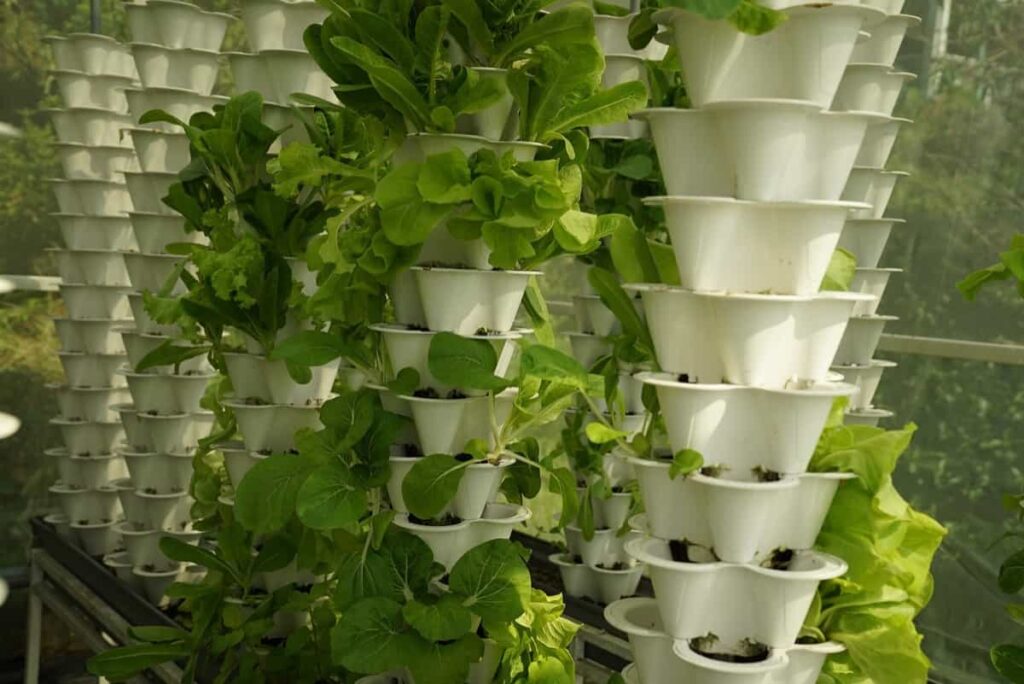
Finally, vertical hydroponic farming can provide year-round crop production, even in areas with limited growing seasons. This is because crops can be grown indoors under controlled conditions. Vertical hydroponic farms can also be located close to population centers, which reduces transportation costs and help to ensure a steady supply of fresh produce.
Types of vertical hydroponic systems
Vertical hydroponic systems come in various sizes and shapes to accommodate different types of crops. The most common type of system is the deep water culture system, which uses a reservoir of nutrient-rich water to support the roots of plants suspended in the air. Other popular types of vertical hydroponic systems include the aeroponic system, which uses the misted nutrient solution to support the roots, and the drip irrigation system, which delivers a steady supply of water and nutrients to the roots through a series of small holes in the grow media.
Choosing the right site for your vertical hydroponic farm
When you’re ready to start your vertical hydroponic farm, the first step is choosing the right site. The type of crop you’re growing, the climate, and the space you chose will all play a major role in determining the best location for your farm. If you’re growing temperate crops like tomatoes or lettuce, you’ll need to find a site with moderate temperatures and plenty of sunlight.
If you’re in a colder climate, you may need to use greenhouses or another artificial lighting to provide enough warmth for your plants. It is better to consider the amount of space available. Vertical hydroponic farms can be as small as a few shelves in a garage or basement or as large as an entire warehouse. Choose the right size for your needs, and ensure you have enough room for all the necessary equipment.
Finally, think about what kind of water supply you’ll need. Most vertical hydroponic farms use recirculating systems, so you’ll need access to a reliable source of clean water. In case you area has hard water; you will need to install a filtration system to remove minerals from the water before it reaches your plants.
In case you missed it: Vertical Saffron Farming: The Red Gold Revolution for Excellent Profits
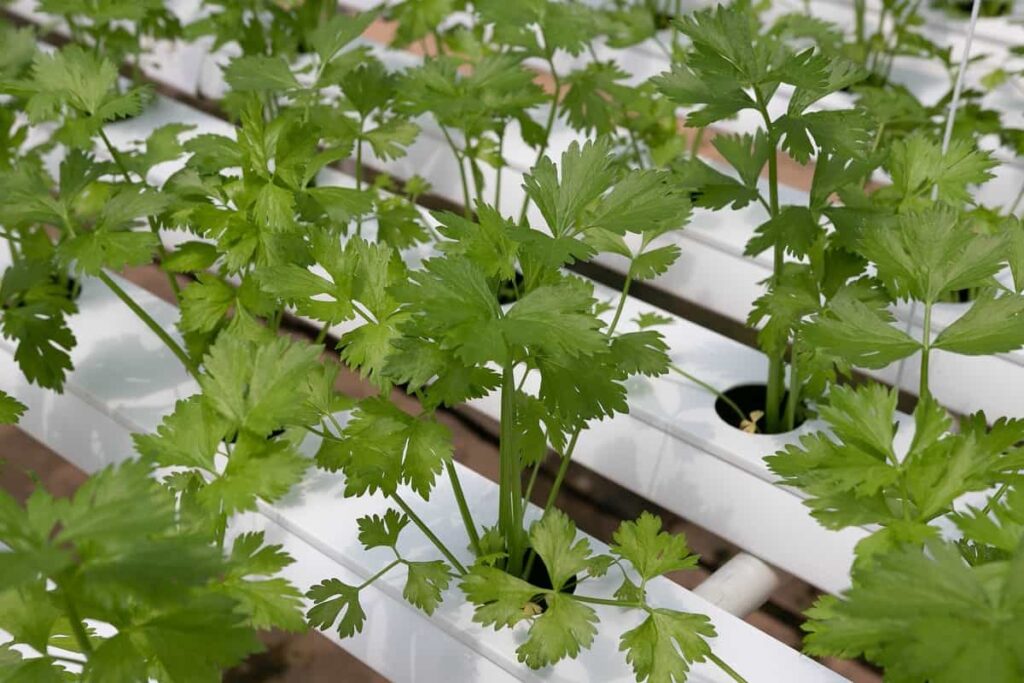
Cost of vertical hydroponic farming
The cost of vertical hydroponic farming can vary depending on the grow area and crops. A small, home-based setup may cost a few hundred dollars to start, while a large commercial operation can cost tens or even hundreds of thousands. The most considerable costs associated with vertical hydroponic farming are typically the initial investment in equipment and infrastructure and ongoing energy and water costs.
Growing methods of vertical hydroponics
Vertical hydroponic farming is a type of farming system where crops are grown in vertically stacked layers without soil, using mineral nutrient solutions in water. Vertical hydroponic farming systems grow various crops, including leafy greens, herbs, and small fruits and vegetables. There are many benefits to vertical hydroponic farming, including increased yields, reduced water usage, and year-round production.
In addition, vertical hydroponic farms can be located in urban areas, making them close to consumers. There are several types of vertical hydroponic systems, each with advantages and disadvantages. The most common types of systems are ebb and flow, drip irrigation, aeroponics, and NFT (nutrient film technique).
Ebb and flow systems pump nutrient-rich water to the roots of plants regularly. The excess water then drains back into a reservoir where it can be reused. These systems are relatively simple to set up and operate but require frequent monitoring to ensure the plants in the system get the required amount of water.
Drip irrigation systems deliver nutrients directly to the roots of plants through a network of pipes and emitters. These systems can be automated so that nutrients are delivered on a schedule that meets the needs of the plants. Drip irrigation systems are less labor-intensive than ebb and flow systems but can be more expensive to set.
In case you missed it: Vertical Tomato Farming: Modern Way of Getting More Yields in Less Space
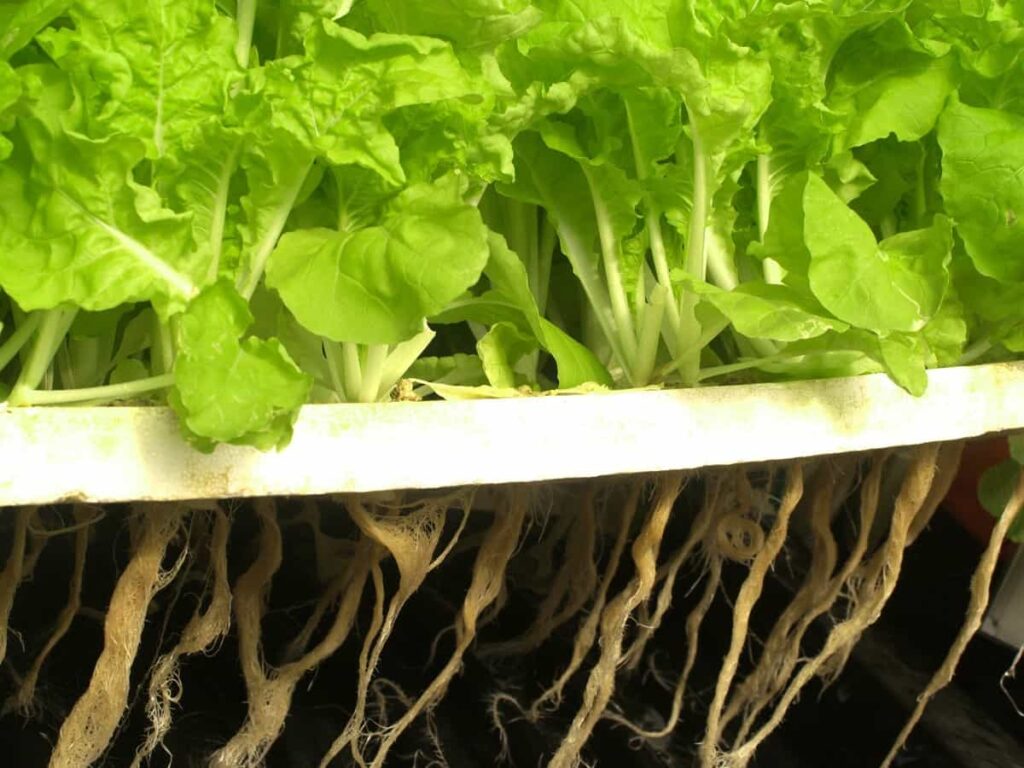
Setting up your vertical hydroponic system
- You need to choose the right location. The location should be close to a water source and have access to sunlight.
- You need to build the frame for your system. Make sure the frame will support the weight of the plants and the reservoir.
- You need to install the pumps and tubing. The pumps will circulate water from the reservoir to the plants.
- You need to add the growing media and plants. The grow media will provide nutrients for the plants and support their root systems.
- You need to monitor the system closely and ensure everything is working correctly.
How to start a successful vertical hydroponic farm
If you’re interested in starting a vertical hydroponic farm, there are a few things you need to know to be successful. First, you’ll need to find a location with plenty of sunlight. This is because your plants will need lots of light to grow properly. You’ll also need to ensure that your chosen location has good drainage and is free of any obstacles that could block the sunlight from reaching your plants. Once you’ve found the perfect location for your farm, you’ll need to set up your system.
There are many types of hydroponic systems, so you’ll need to research to select which one is right for you to grow plants. You’ll also need to purchase or build grow beds and reservoirs for your plants. After your system is set up, you’ll need to add water and nutrients. Then, you can start planting. With proper care, your vertical hydroponic farm will soon produce fresh, healthy produce for you and your family.
What kind of vegetables can you grow vertically in hydroponics?
Vertical hydroponic farming is where plants are grown in vertically stacked trays or columns. This type of farming allows for a higher density of plants, which means that more vegetables can be grown in a smaller space. Some of the most popular and easy vegetables to grow in vertical hydroponics include lettuce, tomatoes, peppers, amaranth, spinach, capsicum, coriander/cilantro, okra, eggplant, Malabar spinach, cluster beans, garden sorrel, mint, and cucumbers.
What kind of herbs can you grow vertically in hydroponics?
Many people are surprised to learn that various herbs can be successfully grown using vertical hydroponics. Almost any herb can be grown hydroponically as long as the proper system is in place. Some of the most popular and easy herbs to grow hydroponically include basil, chives, cilantro, mint, oregano, rosemary, and thyme. These herbs are relatively easy to grow and maintain and provide a bounty of flavor and nutrients.
In case you missed it: Top 29 Vertical Vegetable Garden Ideas for Beginners: Check How this Guide Helps Home Gardeners
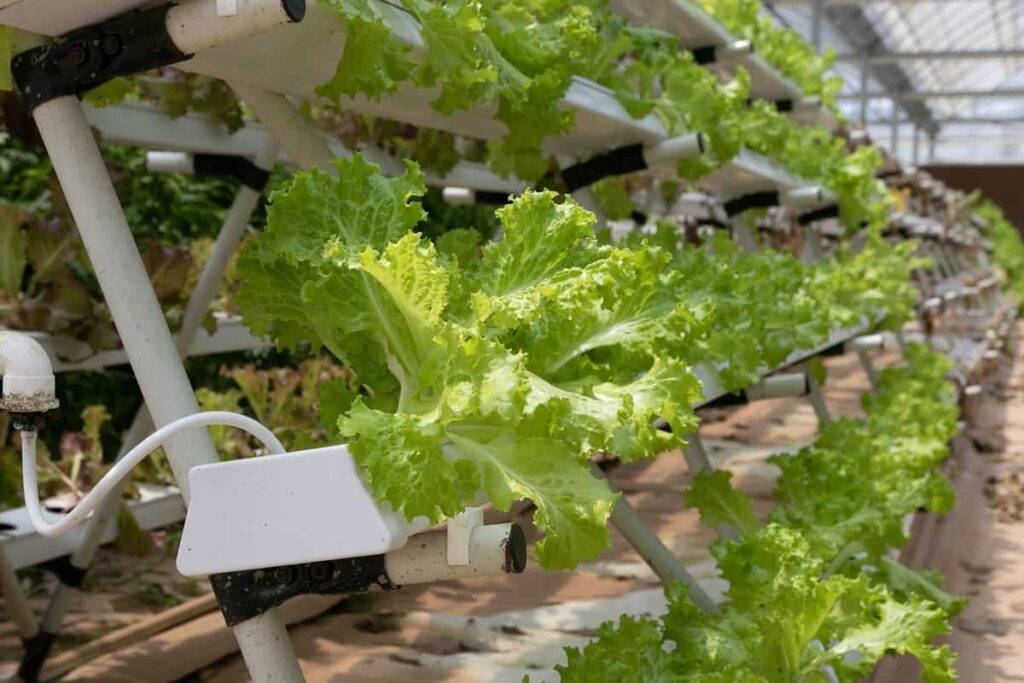
In addition to the culinary herbs mentioned above, many medicinal herbs can be successfully grown using vertical hydroponics. Some of these include echinacea, ginger, ginseng, and turmeric. If you’re interested in growing herbs using vertical hydroponics, it’s important to do your research and choose a system that will best suit your needs. There are various vertical hydroponic systems on the market, so it’s important to find one that will work well for the plants you want to grow.
What kind of flowers can you grow in vertical hydroponics?
There are many types of flowers that you can grow in vertical hydroponics, including roses, lilies, daisies, and tulips. You can also grow herbs and spices in vertical hydroponics, such as basil, oregano, and thyme.
How much yield can you expect in vertical hydroponic farming?
Vertical hydroponic farming is a great way to produce large yields of fruits and vegetables in a small space. If you are considering starting a vertical farm, you may wonder how much yield you can expect. The yield of the crop grown in vertical hydroponics depends on several factors, including the type of hydroponic system you use, the crops you grow, and the available space. However, achieving very high yields from vertical hydroponic farms is possible with a well-designed system and proper care.
For example, one study found that lettuce grown in a vertical NFT system had a yield of 8.5 kg per square meter, significantly higher than the yield from traditional soil-based agriculture. Another study found that tomatoes grown in a vertical aeroponic system had a yield of 9.4 kg per square meter, which is much higher than traditional agriculture yield.
So, if you are planning on starting a vertical hydroponic farm, you can expect to achieve very high yields of fruits and vegetables. With proper care and design, your farm can produce enough food to feed your family and sell some extra produce at farmer’s markets or through community-supported agriculture programs.
Profits in vertical hydroponic farming
Hydroponic farming is a type of agriculture where plants are grown in a water-based solution instead of soil. This farming method has many benefits, including a smaller environmental footprint, higher yields, and less water and fertilizer usage. Vertical hydroponic farming is a system where plants are grown on vertically stacked shelves or towers without soil. This farming offers even more benefits than traditional hydroponic farming, including increased space efficiency, more straightforward automation, and better pest and disease control.
Profits in vertical hydroponic farming can come from several sources. The most obvious source is the sale of the crops themselves. But vertical hydroponic farms can also generate income from selling the excess nutrient-rich water used to feed the plants. This water can be sold as fertilizer for other types of crops, or it can be used in aquaculture operations to raise fish or other aquatic creatures.
How to start vertical hydroponic farming at home?
Vertical hydroponic farming is an efficient way to grow plants at home. Using a vertical system can save space and time while still providing your plants with the nutrients they need to thrive. There are certain things to remember when setting up a vertical hydroponic system at home. First, you’ll need to choose the correct location. A sunny spot near a window is ideal. Then, you’ll need to select suitable containers. Plastic buckets or barrels are a good option. Once you have your containers and location set up, you’ll need to fill them with a growing medium.
This can be anything from gravel to sand to vermiculite. Next, you’ll need to add your plants. Make sure to space them evenly, so each plant has room to grow. Finally, you’ll need to set up a watering schedule once or twice a week should be sufficient. Vertical hydroponic systems are relatively low-maintenance, so you shouldn’t need to worry about too much upkeep. With some planning and effort, you can easily set up a vertical hydroponic system at home and start reaping the benefits of fresh, homegrown produce.
In case you missed it: A Guide to Understand Vertical Urban Farming/Gardening: Check How this Helps Beginners
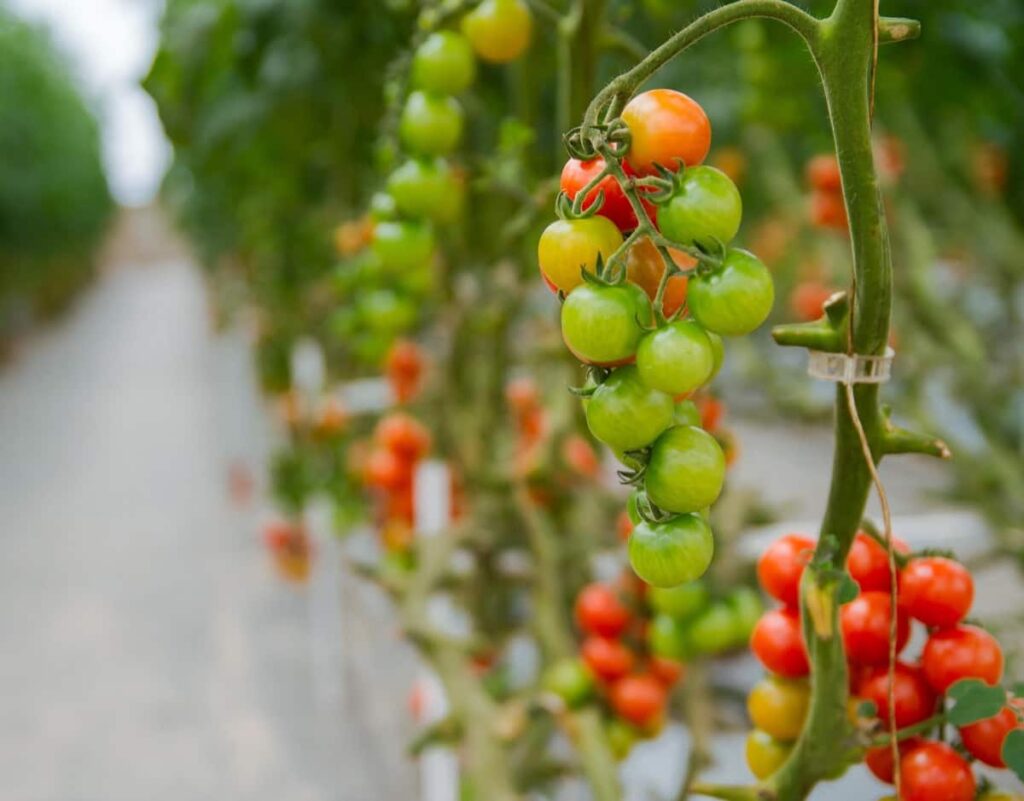
How to start vertical hydroponic farming in a greenhouse
Vertical hydroponic farming in a greenhouse is a great way to maximize space and great yield of food in a small area. This type of farming is very efficient and can produce a high yield in a small space. A vertical hydroponic system can be set up in a greenhouse using shelves or racks. The plants are grown in containers that are placed on shelves or racks.
A water pump circulates the nutrient-rich water to the plants and the roots of the plants are exposed to water, which allows them to absorb the nutrients they need to grow. Vertical hydroponic farming is a wonderful option for those who want to produce a large amount of food in a small space. This type of farming is very efficient and can yield a high return on investment.
Conclusion
Hydroponic farming is a highly efficient and sustainable way to produce crops, and vertical hydroponic farming takes this concept one step further by maximizing space. If you’re interested in starting your vertical hydroponic farm, there are a few things you need to know first. But don’t worry; we’ve got you covered. Check out our guide on everything you need to start vertical hydroponic farming.
- Irrigation and Water Management in Pineapple Farming
- Blossom to Harvest: Mastering Flowering and Pollination in Papaya Farming
- Pig Fattening Essentials: From Selection to Sale for Beginners
- Raising Wagyu Cattle: A Complete Guide for Premium Beef Production
- Soil Types and Their Water Holding Capacity
- Optimizing Irrigation Schedules for Coconut Groves for Enhanced Yield
- Espresso Your Garden: Coffee Grounds for Healthier Acid-Loving Plants
- The Best Soil Mix for Snake Plants: How to Mix Your Own Snake Plant Soil
- Green Thumb Success: Expert Tips for Cultivating Greenhouse Beans All Year Round
- Bloom All Year Round: The Ultimate Guide to Indoor Hyacinth Care
- Eco-Friendly Gardening: How to Make Liquid Fertilizer from Kitchen Waste
- Ultimate Guide to Grow Anise in Pots: Explore Seed Propagation to Harvesting
- Guide to Raising Chester White Pigs: Discover Breed Facts to Growth Management
- Mastering the Elegance: The Ultimate Guide to Weeping Cherry Tree Care, Planting, and Maintenance
- Ultimate Guide to Planting Garlic in Grow Bags: Growing Strategies for Beginners
- How to Fix Spider Plant Leaf-Related Problems: Natural and Organic Remedies
- 10 Reasons Why Your Tulsi Plant is Shedding Leaves: Home Remedies and Solutions
- Optimizing Growth and Yield: The Advantages of Palm Bunch Ash Fertilizer
- Utilizing Neem Oil Extract as a Natural Pesticide for Hydrangea
- From Soil to Harvest: Various Ways in Which Farmers Can Use AI Tools
- Steps to Encourage and Induce Citrus Flowers: A Comprehensive Guide
- How to Fix Snake Plant Leaf-Related Issues: Natural and Organic Remedies
- Transform Your Garden into a Fragrant Oasis with Raat Ki Rani (Night Blooming Jasmine)
- Discover the Ideal Chicken Breeds for Philippine Farms
- How to Create a Poultry Egg Farm Business Plan for Profits
- Grow Lemon Cucumbers Like a Pro: Insider Techniques for Bountiful Yields
- Ultimate Guide to Caring for Your Pink Princess Philodendron: Tips for Thriving Variegation
- Areca Nut Profit Per Acre: Calculating Yield and Cost of Cultivation
- How Kaveri Chicken is Becoming a More Profitable Breed in Indian Backyards
- Transform Your Barn: 9 Steps to Convert a Horse Stall into a Chicken Coop
- Exploring Suffolk Sheep Disadvantages with Limitations and Challenges
- Guide to Solving Potted Lemon Tree Problems: How to Revive Lemon Tree in Containers
- Steps to Encourage Female Pumpkin Flowers: Best Strategies for More Flowers and High Yields
- Ultimate Guide to Yellow Raspberries: Exploring from Planting to Care
- Ultimate Guide to Planting Ginger in Grow Bags: Growing Strategies for Beginners
- Ultimate Guide to Growing Red Creeping Thyme: Propagation, Planting, Pruning, and Care

We are very much eager to know how soon we can get the farming in 10 days as we are indians n we do have land we grow vegetables,crops, cereals n pulses